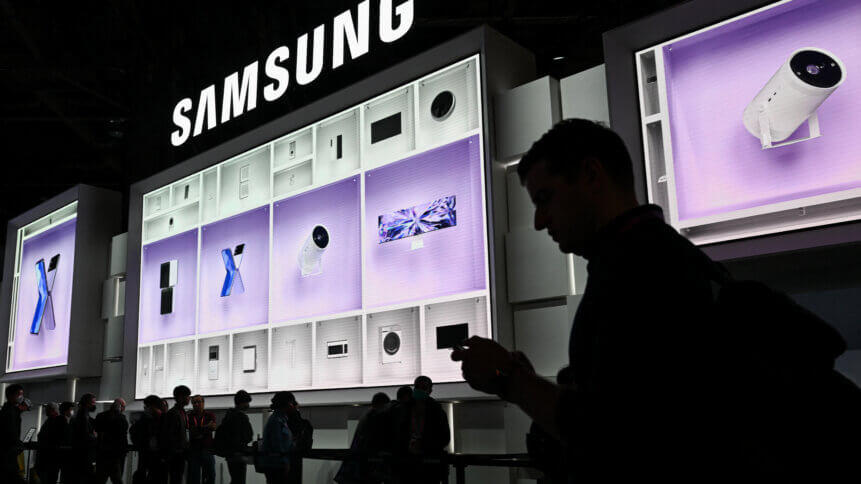Samsung posts lowest quarterly profit since 2014

The economic situation and faltering consumer demand in the PC and smartphone market for most of last year were clear signs that the tech downturn might be more profound and longer lasting-than had been feared. In the latest sign of sputtering demand, Samsung Electronics Co, alongside its rivals, is reporting disappointing results for the fourth quarter of 2022. To top it off, the outlook for the first half of 2023 is far from rosy.
Like most of its peers, Samsung attributed its poor results to “weak demand.” For context, the South Korean conglomerate’s quarterly profits for the final three months of 2022 plunged to their lowest level in eight years as customers bought fewer cell phones and laptops. “The business environment deteriorated significantly in the fourth quarter due to weak demand amid a global economic slowdown,” the company explained.
The tech giant also noted that earnings in its memory business decreased sharply as prices fell and customers continued to adjust inventory. “The System LSI business also saw a decline in earnings as sales of key products were weighed down by inventory adjustments in the industry,” it added. To put that into perspective, Samsung reported an operating profit of 4.3 trillion Korean won (US$3.5 billion) on Tuesday for the three months ending in December, down 69% from a year ago.
Revenue fell 8% to just under 70.5 trillion won (US$57.3 billion), it said . Ironically, it was the company’s weakest quarterly profit since the third quarter of 2014, when its smartphone business also lost ground to competitors. These dreary results were anticipated, because Samsung had flagged the lackluster performance in a pre-earnings forecast earlier in the month, with analysts citing falling memory chip prices and fewer orders of consumer devices.
Tech Wire Asia reported recently that the PC market had collapsed during the fourth quarter of 2022, recording an unprecedented drop in sales due to inflation and other factors. IDC reported that PC unit sales fell by 28.1% to 67.2 million units, while Gartner said sales fell by 28.5% to 65.3 million. According to Gartner, the drop is the largest since the firm began its PC coverage in the mid-1990s. Unfortunately, PC makers weren’t the only ones who dealt with a grim 2022. Even smartphone shipments tanked to their worst annual performance in a decade.
Samsung sees a slow recovery in the PC and smartphone market
In a presentation to investors, the electronics maker admitted that “mobile and PC demand was weak,” and its memory chip business had also suffered “as customers continued to adjust their inventories amid deepening uncertainties.” Samsung expects some of those problems to continue in the coming months due to global economic uncertainty.
However, it is also fair to note that the South Korean giant anticipates overall demand in both the PC and smartphone market to start recovering in the second half of the year. Meantime, smartphone demand will likely slide again this quarter compared to the same period a year ago “due to the economic slowdown in major regions,” it said.
YOU MIGHT LIKE

Samsung’s five-year plan to lure US chip buyers
Interestingly, the Visual Display business posted higher revenue and operating profit as sales of premium products, including Neo QLED and Super Big TVs increased. At the same time, the Digital Appliances business saw a profit decline because of cost increases due to deteriorated market conditions as competition intensified.
The faith of other chipmakers
Samsung is not alone; the global technology industry has been battling a sharp and sudden downturn in demand since late last year, as companies cut spending on tech products and services while consumers spend less on discretionary goods in the face of surging inflation. Take the example of Samsung’s local rival and the world’s second-largest memory chipmaker, SK Hynix.
SK Hynix also just posted a record quarterly operating loss this week. For the quarter that ended in December, SK Hynix swung to a 1.7 trillion won (US$1.38 billion) operating loss from a 4.2 trillion won profit a year earlier. That’s the biggest quarterly loss since SK Group acquired Hynix in 2012.
In the fourth quarter, other chipmakers like AMD saw their PC chip group revenue decline 51% on a year-on-year basis. Intel declined by 36%, but from a more extensive base. Both companies have also been facing a slump in the PC market after two years of high sales during the Covid pandemic.
What’s 2023 looking like for the smartphone and PC market?
Most chipmakers believe the recovery will not occur until the second half of this year. Samsung stated that “while the macroeconomic uncertainties are expected to persist, the company anticipates demand to begin recovering in the second half. The semiconductor business will continue reinforcing market and technology leadership and expanding the proportion of advanced nodes and products, such as DDR5, LPDDR5x, and Gate-All-Around (GAA) processes,” Samsung noted in its statement.
For the smartphone market, the South Korean giant expects the impacts of the economic downturn to continue for the time being. However, analysis of smartphone purchase patterns suggests that demand will continue to polarize between premium and low-priced phones. Even SK Hynix expects market conditions to improve gradually later in the year, as chipmakers reduce supply and clients once again buy chips at low prices.
“Industry experts do not expect an increase in the supply of memory chips as market players are planning to reduce investments and production, which will lead inventories to peak within the first half,” SK Hynix said. Back in October, 2022, SK Hynix said it planned to reduce its 2023 investment by more than 50% versus 2022 after warning of an “unprecedented deterioration” in memory chip demand.
AMD CEO Lisa Su, on the other hand, said that it expects the total PC market to be down 10% in 2023. Intel, like AMD, declined to provide a full-year forecast because of “the uncertainty in the current environment,” CEO Pat Gelsinger said on a conference call with analysts. For at least the first half of the year, Intel said it would deal with “persistent economic headwinds,” the company said in a presentation on its results.









